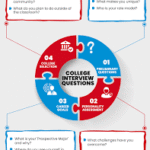Applying to colleges in the United States can feel like a huge step and honestly, it is between researching schools, writing essays, and meeting deadlines, it’s easy to feel overwhelmed. But what makes the process even more challenging is when small mistakes end up having big consequences.
To help you avoid unnecessary stress (and missed opportunities), here’s a friendly guide to some of the most common mistakes students make when applying to U.S. colleges and how you can avoid them.
1. Starting Too Late
Let’s be honest procrastination is tempting. But when it comes to college applications, waiting until the last minute can really hurt your chances.
What can go wrong:
- You rush through essays or forget important documents.
- Deadlines sneak up on you.
- You won’t have time to fix errors or get help if needed.
What to do instead:
Start early. Allow enough time for you to consider your options, refine your application, and take it all in.
2. Skipping the Fine Print

Every college has its own set of application rules some want extra essays, some require interviews, and others ask for specific documents.
Why this matters:
- Missing even one item can make your application incomplete.
- You could be disqualified without knowing it.
The fix:
Carefully read the application requirements for each school. Make a list to ensure you don’t overlook anything.
3. Writing a Boring or Generic Essay
One of the rare opportunities for admissions officers to hear your voice is in your personal essay. Don’t waste that chance by writing a cookie-cutter or overly formal essay.
What goes wrong?
- You blend in with every other applicant.
- Your story doesn’t make an impact.
How to stand out:
Be real. Talk about your own struggles, experiences, or takeaways. Show them who you are, not just what you’ve done.
4. Applying to Too Few Schools
Many students only apply to one or two colleges, usually their top picks. While it’s good to aim high, it’s risky to put all your hopes in just a couple of schools.
Why it’s risky:
- You might not get accepted.
- You limit your scholarship and program options.
Smart approach:
Apply to a mix of schools:
- Reach schools (hard to get into)
- Match schools (good academic fit)
- Safety schools (higher chances of acceptance)
5. Forgetting Important Documents
Even though many colleges are test-optional, some still require SAT/ACT scores. And transcripts are always a must.
The problem:
- Your application is delayed if any test results or transcripts are missing.
- Some colleges won’t even look at incomplete files.
How to avoid it:
Double-check what each college needs. Request transcripts early and send any required test scores directly from the testing agency.
6. Delaying Financial Aid Applications
Money is a big part of the college decision—and missing financial aid deadlines can leave you with fewer options.
What goes wrong:
- You miss out on grants, scholarships, or work-study.
- Your financial aid package arrives late.
What to do:
Complete your FAFSA as soon as it opens (usually in October). If your college requires the CSS Profile or other forms, get those done early too.
7. Ignoring Emails from Colleges
Colleges often send updates, requests for missing information, or interview invitations by email.
Why this matters:
- You could miss out on key steps.
- Ignoring emails looks careless to admissions teams.
The fix:
Check your email every day. Create a folder for college-related messages so nothing slips through the cracks.
Final Thoughts
Applying to U.S. colleges doesn’t have to be stressful as long as you stay ahead of the game. Avoiding these common mistakes can make your application process smoother, less confusing, and more successful.
Recall that the objective is to be proactive, prepared, and sincere rather than to be flawless. You’ve got this!










